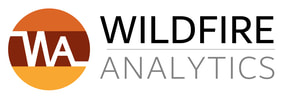|
Nationwide Landscape Fire Exposure Map, circa 2024
A manuscript documenting Canada's landscape fire exposure is forthcoming, in the meantime you can download the PDF map or access the data here. The map was generated following the methodology described by Beverly, McLoughlin and Chapman (2021). There is also a new R package for computing exposure and directional vulnerability. Background
Beverly and McLoughlin (2019) showed that real fires in Alberta did not occur preferentially in simulated burn probability hotspots mapped with a popular landscape fire assessment tool (Burn-P3). You can read more about the details here. This work disrupted a well-entrenched assumption within the landscape fire modeling community in Canada that burn probability simulation is an effective method for identifying which landscape locations are most likely to burn in the years that follow. In exploring the underlying reasons why burn probability simulations did not align well with real world fires, we were challenged to think differently about the problems inherent in landscape fire assessment. This led us to pursue a fundamentally different process-oriented approach to the study of landscape pattern in fire-prone ecosystems and resulted in a novel new metric of landscape fire. The landscape fire exposure metric (Beverly, McLoughlin and Chapman 2021) is a numeric rating of the potential for fire transmission to a location given surrounding fuel composition and configuration, irrespective of weather or other fire controls. Exposure to hazardous fuels can be assessed in minutes for large landscapes by one variable at virtually no marginal cost using rudimentary GIS techniques. This simple, deterministic, univariate metric of fire exposure aligned well with real-world fires observed in our study area and represents a departure from computationally complex and data-intensive approaches for characterizing fire spread potential across landscapes. |
© 2025 by J. Beverly
Banner photo courtesy Alberta Wildfire - Fire PWF-034 2018
Banner photo courtesy Alberta Wildfire - Fire PWF-034 2018



